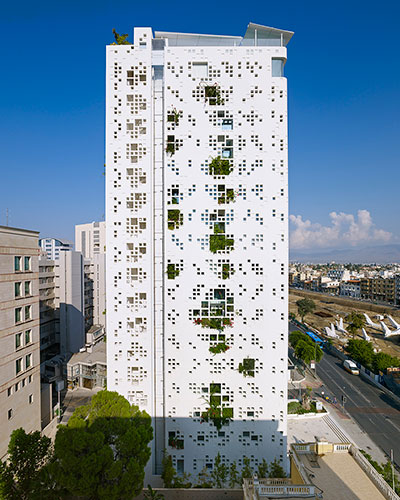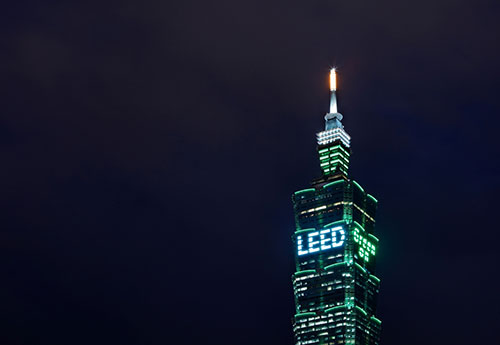June 21, 2016
CHICAGO – The Council on Tall Buildings and Urban Habitat (CTBUH) is proud to announce the winners and finalists for the CTBUH 2016 Tall Building Awards. This year saw some of the most forward-looking entries yet, with 132 submissions vying for recognition.
The CTBUH Tall Building Awards are an independent review of new projects, judged by a prestigious panel of experts. The Awards aspire to provide a more comprehensive and sophisticated view of these important structures, while advocating for improvements in every aspect of performance, including those that have the greatest positive impact on the individuals who use these buildings and the cities they inhabit.
This year’s winners and finalists have set a new bar for the annual awards program, with many employing inventive solutions that respond to demanding site constraints and prerogatives related to sustainability, seismicity, wind forces, mixed functionality, and a vibrant urban habitat. Others achieve unrivaled iconicity, while introducing groundbreaking structural solutions and spatial arrangements at height.
Award recipients have been recognized across seven categories: Best Tall Building Awards – Regional (Americas, Asia & Australasia, Europe, and Middle East & Africa), Urban Habitat Award, Innovation Award, Performance Award, 10 Year Award, Lynn S. Beedle Lifetime Achievement Award, and the Fazlur R. Khan Lifetime Achievement Medal.
All award winners will be recognized at the CTBUH 15th Annual Awards Symposium, which will take place at the Illinois Institute of Technology, Chicago, on November 3. The symposium will be followed by the Awards Ceremony & Dinner in the iconic Crown Hall. At the event, the four regional Best Tall Building winners will compete for the title of Best Tall Building Worldwide, as determined by the Awards Jury on the night.
Best Tall Building Awards
This category recognizes projects that have made extraordinary contributions to the advancement of tall buildings and the urban environment, and that achieve sustainability at the highest and broadest level. The winning projects exhibit processes and innovations that have added to the profession of design and enhance the cities and the lives of their inhabitants. The Best Tall Buildings have been named for each of four competing regions in the world, from nominees representing a total of 27 countries. Twelve finalists are also recognized as exemplary projects that were among the top candidates under consideration for winner status in each category.
Best Tall Building Americas Winner
“VIA 57 West is an inspired hybrid of the traditional courtyard block and high-rise tower. Its complex and intelligently orientated architecture maximizes occupants’ views to the Hudson River and activates the New York City waterfront with a dynamic new standard for integrated urban infill development.”
Best Tall Building Asia & Australasia Winner
“Shanghai Tower shows the greatest commitment to communal space in a tall building since Commerzbank Tower completed in 1997. It contains the world’s first truly ‘inhabitable’ double-skin façade on a skyscraper, which is not only remarkable for its intended greenery, but its incorporation into the tower’s overall ventilation strategy. The sacrifice of valuable floor area to realize this social amenity proves that the aspirations for Shanghai Tower went far beyond mere commercial gain.”
Best Tall Building Europe Winner
“The White Walls is a truly groundbreaking exercise in materiality, serving as a successful expression of the architectural and environmental values of the Mediterranean across the vertical axis. Extensive vegetation on the north façade and the presence of loggias on the south façade create a very real connection with nature, while the tower’s punctured concrete walls quite literally ‘bleed green’ with tangles of local plant species.”
Best Tall Building Middle East & Africa Winner
“The Cube indicates a clear alternative to the extruded box typology that defines the majority of residential high-rises around the world, instead comprising a stack of completely unique villas in the sky. The tower is particularly successful in its structural design, which features a system of elegantly framed girder walls that add visual flair and allow for completely unobstructed floor plans.”
Best Tall Building Americas Finalists
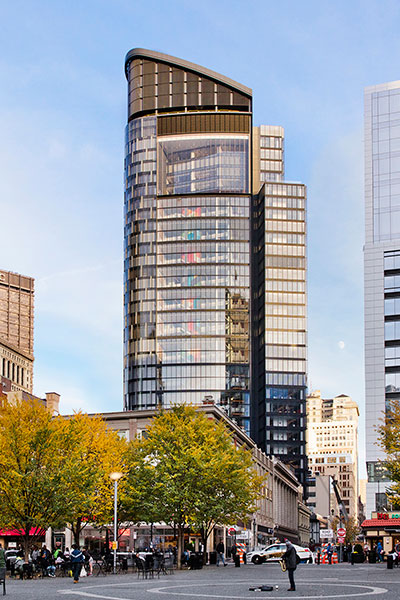
The Tower at PNC Plaza, Pittsburgh, sets a new benchmark in sustainability and performance, both for the building itself and people who use it, employing such measures as natural ventilation, optimal solar orientation, water recycling, and waste diversion.

Torre Reforma, Mexico City, is a dramatic departure from the existing high-rise architecture of Mexico City. Breaking from this mold has resulted in a versatile, column-free building that incorporates natural energy reducing elements and a structurally expressive exterior.

432 Park Avenue, New York City, pushes the skyscraper typology to new extremes with a 1:15 slenderness ratio. Its outward simplicity belies a structural complexity that incorporates high-strength concrete and manifold lateral load reduction strategies.
Best Tall Building Asia & Australasia Finalists

Beach Road, Singapore, reinterprets the Singaporean ideal of the “city in a garden” and applies it to the high-rise form through the presence of densely planted sky gardens and an expansive landscaped public avenue at ground level, referred to as the “green spine.”

Beijing Greenland Dawangjing Tower, Beijing, features an alternating pattern of extruding and receding trapezoidal modules. These modules function like prisms, catching daylight and refracting it to create an interesting interplay of light and shadow.

Jiangxi Nanchang Greenland Central Plaza, Nanchang, has proven that the strategy of cold bending glass panes can be used to mitigate cost, fabrication, construction, and long-term durability factors traditionally associated with all-glass tower façades.

Shinsegae International, Seoul, is characterized by a tightly spaced metal grid that expresses the structural fidelity of the building, while evoking a sense of woven material in a nod to the fashion industry and the design imperatives of the primary tenant.
Best Tall Building Europe Finalists
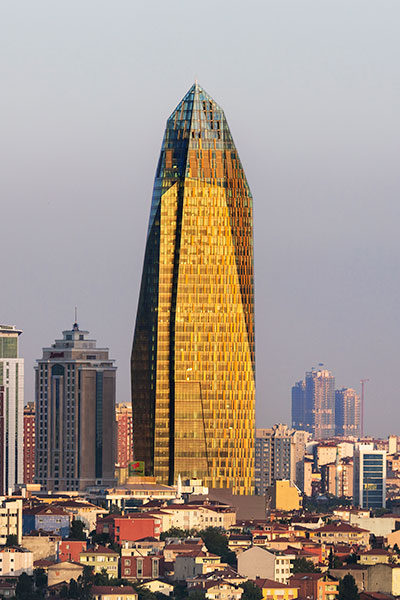
Allianz Tower, Istanbul, was inspired by myriad spheres of cultural reference. The tower-like habitations emerging from rock formations in Central Turkey were heavily influential, while the Islamic obsession towards ornament was likewise of interest.

Allianz Tower, Milan, conveys both a sense of lightness, with its elegant structural glass fins that undulate softly up the tower, and solidity, employing four large steel buttresses that dramatically reduce wind-induced horizontal accelerations.

ECB – European Central Bank, Frankfurt, achieved prominence through its grand atrium, visible steel structure, and clear dialogue with the important urban reference points in Frankfurt, Germany: the Alte Oper, the Museumsufer, and the financial district.

Grattacielo Intesa Sanpaolo Torino, Turin, represents a crossroads of environmental and social well-being, as evidenced by its double-skin façade, which maximizes energy performance and allows light into the tower’s numerous communal spaces.
Best Tall Building Middle East & Africa Finalists

Iris Bay, Dubai, is characterized by a distinctive oval shape that limits solar exposure and creates areas of negative pressure throughout the structure, serving to draw air through the building and reduce dependence on mechanical ventilation.
Urban Habitat Award
This award acknowledges that the impact of a tall building is far wider than just the building itself, and recognizes significant contributions to the urban realm in connection with tall buildings. Awardees range from brilliantly executed master plans that have led to quality urban environments, down to the scale of a single site, where the interface between a tall building and the urban realm is exemplary. These projects demonstrate a positive contribution to the surrounding environment, add to the social sustainability of both their immediate and wider settings, and represent design influenced by context, both environmentally and culturally.
Urban Habitat Award – Winner
Wuhan Tiandi Site A, is an exemplary urban regeneration master plan that has transformed an underutilized dilapidated district into a true metropolitan community. Located in the Wuhan core area, its ethos is to establish a compact, sustainable, transit-oriented, pedestrian friendly community with walkable blocks and courtyard housing, elements rarely seen in new developments throughout China. The urban form integrates buildings of different heights to create spatial and visual interest. Towers are placed in strategic locations within the community, capitalizing on views of the Yangzi River, and creating valuable settings for landmark towers. The remaining site area is dedicated to an elaborate connective tissue comprising low- and mid-rise blocks, public spaces, and landscaping.
“The Wuhan Tiandi Mixed-Use Development demonstrates that a master plan for a tall building neighborhood can include vibrant public spaces that offer a high level of intimacy, walkability, and social design. The disposition of tall buildings combined with an animated public realm creates a vibrancy that is rarely found in newly created communities. The Wuhan Tiandi complex offers a high quality of life for those that live, work, and visit – a quality of life that rivals long established tall building neighborhoods found elsewhere in the world.”
Urban Habitat Award – Finalists

One Shenzhen Bay (Phase I), Shenzhen, incorporates an assemblage of ground planes and terraces that bring greenery and a sense of integration to higher levels. Water features and seating areas create tranquil outdoor spaces for informal social encounters and private respite.

SkyHabitat, Singapore, advances the concept of urban habitat with two stepping towers that are linked by three bridging sky gardens, creating a series of interconnected streets, gardens, and terraces in the air, with a variety of areas for common recreation and congregation.

SkyVille @ Dawson, Singapore, its central innovation is the public, external, shared spaces interwoven through the cluster of towers from the ground to the roof. Each home is part of a “Sky Village” comprising 80 homes that share a sheltered community garden terrace.

Toranomon Hills, Tokyo, is pioneering for how it resolves the high-rise condition with an arterial road running through the site. It does this by layering tiers of urban activity into the complex, with a large green space above the road and a primary thoroughfare below.
10 Year Award
The 10 Year Award recognizes proven value and performance (across one or more of a wide range of criteria) over a period of time. This award gives an opportunity to reflect back on buildings that have been completed and operational for a decade, and acknowledge projects that have performed successfully long after the ribbon-cutting ceremonies have passed.
10 Year Award – Winner
Hearst Tower, completed in 2006 and built atop the hollowed shell of a 1928 landmark office building, tread new ground in terms of historic preservation when it was completed 10 years ago in New York City. Since then, the tower’s impact on the local and global tall building industry has only become clearer, not least for its forward-looking green strategies. Using 26% less energy than a building constructed to normal code, Hearst Tower features a distinct, thermal efficient diagrid that provides a vast open interior. The building’s unique design saved 2,000 tons of steel, involved 90% of steel made from recycled material, and required only 10% of all materials to be imported during construction, reducing overall cost and emissions. See the building profile on The Skyscraper Center.
“Walking along the base of Hearst Tower, you might not even realize that you are right next to one of New York’s greatest architectural achievements of the 2000s. Built directly on top of a 1920s office relic, the tower made the world reexamine what’s possible in terms of preserving historic low-rise buildings in a dense downtown core. There’s also something cathartic about the juxtaposition between its classically reserved base and contemporary diagrid structure above.”
Innovation Award
This award recognizes a specific area of recent innovation in a tall building project that has been realized in a design, implemented during construction/operation, or thoroughly tested and documented for its suitability in a high-rise. Unlike the CTBUH Best Tall Building Awards, which consider each project holistically, this award is focused on one special area of innovation within the design, construction, or operation of the project – not the building overall. The areas of innovation can embrace any discipline, including but not limited to technical breakthroughs, construction methods, design approaches, urban planning, building systems, façades, and interior environment.
Innovation Award – Winner
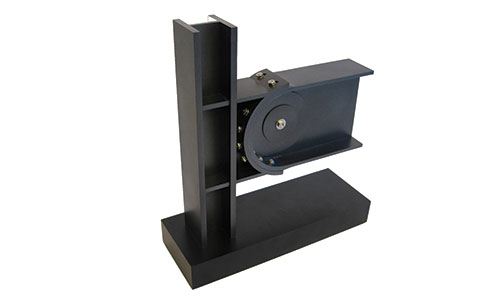

The Pin-Fuse is a dual-element structural solution, composed of Pin-Fuse Joints® and Pin-Fuse Frames™, which slip at pre-set loads to dissipate energy and achieve ductility during seismic events. Ensuring life-safety and collapse prevention performance of structures in moderate and severe earthquakes is generally considered to be a minimum seismic design objective for structures, and is embodied in the codes of most countries. Achieving this objective does not, however, guarantee that a structure can remain in use after a severe earthquake. Damage to components and the permanent drift of a structure often require very expensive repairs and, not infrequently, total replacement of structures. With Pin-Fuse, material yielding and frictional slip allow base structural materials to remain undamaged, thereby reducing associated repairs, offering the potential for increased resilience, lower costs, and enhanced sustainability.
“The Pin-Fuse system opens the door to realizing increased resilience in buildings constructed in highly active seismic regions. By providing just the right amount of give under pre-determined axial loads, the system is innovative for its tested impact on repair frequency, costs, and structural longevity for buildings that have experienced an earthquake.”
Innovation Award – Finalists

Hi-Res CFD Studies for Pedestrian Comfort, unlike conventional wind tunnel tests, provide an accurate analysis of the wind microclimate at the human scale around tall buildings, a vital service for the development of successful urban habitats.

The Brunkeberg System allows for the rapid installation of façade units through a workflow incorporating special delivery containers, automated horizontal / vertical distribution, and crane-less lifting mechanisms with speeds of 60 m/s.

Vertical Slots in Tall Buildings achieve a critical goal in the design of skyscrapers: to increase aerodynamic damping and reduce the dynamic response to wind excitations. The solution leaks air through the building to reduce the formation of wind-induced vortices.
Performance Award
The CTBUH Best Tall Building awards, like most awards programs, recognize new buildings – based partly on the stated intentions of these buildings. However, it is increasingly being recognized that the industry needs to focus on actual “performance” rather than “best intentions.” Thus, the Performance Award recognizes the measured environmental performance of a building or development, and the award goes to the building that has the least environmental impact on the urban realm using measured data.
Performance Award – Winner
TAIPEI 101 already implemented a high level of performance when it was completed in 2004, but this was only the beginning of a 10-plus-year upgrade campaign that has allowed the tower to meet and exceed continuously intensifying green standards recognized around the world. Rigorously adopted and implemented by the management team, the sustainability program for the tower is comprehensive – from the installation of numerous efficient lighting fixtures and plumbing systems, to a robust waste collection system and occupant engagement scheme. Equally successful is the tower’s collection of data, which is examined and reflected upon as systems are further optimized over time. See the building profile on The Skyscraper Center.
“It is rare to see a commitment to upgrade an existing building to this level of environmental performance. The extensive documentation of its energy upgrades and sustainability initiatives speaks for itself; TAIPEI 101 has been the subject of a tireless and exhaustive effort to become one of the most sustainable tall buildings in the world, and it has been successful in this mission. In addition to a comprehensive set of green technologies and systems installed throughout the building, a rigorous occupant engagement program really puts this project in a league of its own.”
Fazlur R. Khan Lifetime Achievement Medal
This award recognizes an individual for his or her demonstrated excellence in technical design and/or research that has made a significant contribution to a discipline(s) for the design of tall buildings and the built urban environment. The contribution may be demonstrated in the form of specific technical advances, innovations, design breakthroughs, building systems integration or innovative engineering systems that resulted in a practical design solution and completion of a project(s).
2016 Fazlur R. Khan Lifetime Achievement Medal – Winner
 Ron Klemencic, is Chairman and CEO of Magnusson Klemencic Associates, an award-winning, 200-person structural and civil engineering firm headquartered in Seattle, Washington, with offices in Shanghai and Chicago. Over his 29-year career, Ron has worked on projects in 24 US states and 23 countries, with developments up to 650,000 square meters (seven million square feet) and towers up to 112 stories. Ron is known for his creativity, innovation, and focus on complex high-rise and mixed-use designs. Since pioneering the development and U.S. adoption of “Performance-Based Seismic Design” (PBSD) methodology for high-rise buildings, Ron continues to advance the application, with a current count of 36 PBSD buildings—more than any other engineer in the U.S.
Ron Klemencic, is Chairman and CEO of Magnusson Klemencic Associates, an award-winning, 200-person structural and civil engineering firm headquartered in Seattle, Washington, with offices in Shanghai and Chicago. Over his 29-year career, Ron has worked on projects in 24 US states and 23 countries, with developments up to 650,000 square meters (seven million square feet) and towers up to 112 stories. Ron is known for his creativity, innovation, and focus on complex high-rise and mixed-use designs. Since pioneering the development and U.S. adoption of “Performance-Based Seismic Design” (PBSD) methodology for high-rise buildings, Ron continues to advance the application, with a current count of 36 PBSD buildings—more than any other engineer in the U.S.
“Ron Klemencic is inarguably one of the biggest influencers in the fields of structural and civil engineering today. Ron has acquired a reputation in the industry as a deviceful problem solver, and for good reason – he has the ability to craft solutions at the highest and broadest levels, a quality that shines brilliantly in all of his work. He is to be commended not only for his successful career, but for his many selfless contributions that have elevated the field of engineering in its entirety, not least for his documentation of the Performance-Based Seismic Design methodology.”






